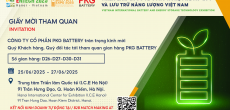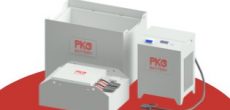Implementing data-driven personalization in email marketing hinges on the ability to collect, process, and utilize real-time data effectively. Moving beyond static segmentation, this deep dive explores the technical requirements and practical steps needed to create a dynamic, responsive email personalization system that reacts instantly to customer behaviors and events. As detailed in the broader context of “How to Implement Data-Driven Personalization in Email Campaigns”, mastering real-time data is critical for elevating engagement and conversion rates.
Table of Contents
A. Technical Requirements for Real-Time Data Collection and Processing
Building a robust real-time personalization system begins with establishing a strong technical foundation:
- Data Ingestion Layer: Deploy event streaming platforms like Apache Kafka or cloud-native services such as Amazon Kinesis to handle high-velocity data streams from multiple sources (website, mobile app, e-commerce platform).
- API Integration: Develop RESTful or WebSocket APIs that push customer actions directly into your data pipeline, ensuring minimal latency.
- Data Processing Engine: Implement real-time processing frameworks such as Apache Flink or Apache Spark Streaming to transform raw data into actionable insights on the fly.
- Event Schema Design: Use a standardized schema (e.g., JSON Schema) to ensure consistency across data sources, facilitating seamless processing.
- Latency Optimization: Optimize data serialization, network configurations, and processing logic to maintain sub-second response times, crucial for personalization accuracy.
Tip: Regularly monitor pipeline latency and throughput metrics using tools like Prometheus or Grafana to identify bottlenecks before they impact user experience.
B. Implementing Event-Triggered Personalization: A Practical Setup
To dynamically tailor email content based on specific customer actions, you must set up event triggers that activate personalization workflows:
- Define Key Events: Identify impactful customer actions such as product views, cart additions, purchases, or customer service inquiries. For example, a cart abandonment event is a critical trigger for personalized recovery emails.
- Event Capture: Use tag managers or SDKs embedded in your website/app to track these events. For instance, implement JavaScript snippets that dispatch event data to your data ingestion layer whenever a customer interacts with product elements.
- Event Processing and Enrichment: In your processing engine, enrich raw events with contextual data:
- Customer profile data (location, segment, loyalty tier)
- Product details (category, price, availability)
- Historical behaviors (purchase history, browsing patterns)
- Trigger Workflow: Set up rules within your marketing automation platform (e.g., HubSpot, Braze, Salesforce) to listen for specific processed events. When an event occurs, initiate personalized email workflows.
Expert Tip: Use a message queue with priority queues to ensure high-importance events like purchase completion are processed with minimal delay, maximizing personalization relevance.
C. Case Study: Using Live Purchase Data to Customize Email Content
Consider an online fashion retailer implementing real-time purchase data integration:
| Customer Action | Data Pipeline Step | Personalization Application |
|---|---|---|
| Customer purchases “Red Running Shoes” | Event captured via API → processed by Flink → stored in Redis | Trigger email with “You bought Red Running Shoes! Complete your look with these accessories.” |
| Customer browses “Summer Dresses” but doesn’t purchase | Behavior tracked via tag manager → real-time update in Kafka → processed and scored | Send personalized email featuring summer dress recommendations based on browsing history. |
This setup demonstrates how integrating live purchase data enables highly relevant, context-aware email content, significantly boosting engagement and conversion. The key is maintaining low latency from event capture to email trigger, ensuring the message resonates with the customer’s immediate intent.
Conclusion
Achieving effective real-time personalization requires a solid technical architecture, from data ingestion through processing to actionable triggers. The detailed steps and case example outlined here provide a blueprint for marketers and developers aiming to elevate their email campaigns with instant, relevant content. Always remember that the quality of your data pipeline directly impacts personalization accuracy—regular monitoring, troubleshooting, and optimization are essential.
“In a world where customer expectations are rising, real-time data integration transforms static campaigns into dynamic conversations.”
For a broader understanding of foundational concepts, refer to this comprehensive guide.












 Visit Today : 64
Visit Today : 64 Visit Yesterday : 132
Visit Yesterday : 132 This Month : 760
This Month : 760 This Year : 9333
This Year : 9333 Total Visit : 17559
Total Visit : 17559 Hits Today : 147
Hits Today : 147 Total Hits : 43312
Total Hits : 43312 Who's Online : 1
Who's Online : 1 Địa chỉ: P.311, Toà B, IA20 Ciputra, Khu đô thị Nam Thăng Long, P. Đông Ngạc, Q. Bắc Từ Liêm, TP. Hà Nội
Địa chỉ: P.311, Toà B, IA20 Ciputra, Khu đô thị Nam Thăng Long, P. Đông Ngạc, Q. Bắc Từ Liêm, TP. Hà Nội Hotline: 091.456.5199 – 02437 577 888
Hotline: 091.456.5199 – 02437 577 888  Email : Info@pkgbattery.com
Email : Info@pkgbattery.com
